- Details
- Hits: 2457
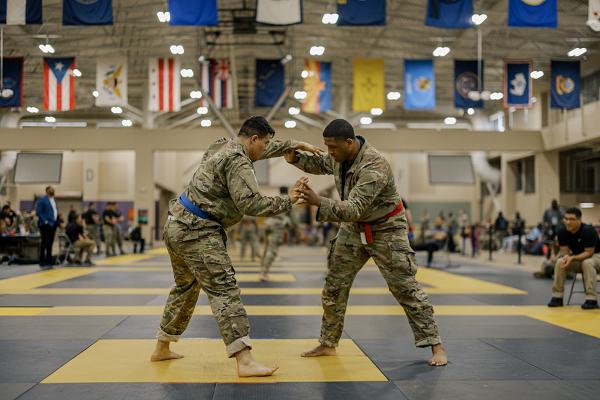
Fort Benning, Georgia. (April 28, 2025): In this photo by Staff Sergeant Cayce Watson, Soldiers compete to win the Lacerda Cup, an Army-wide Combatives tournament that tests soldiers hand-to-hand fighting skills. The competition is named in honor of Staff Sergeant Pedro Lacerda, the first Black Belt professor of Brazilian Jiu Jitsu with the 75th Ranger Regiment. The Army’s Combatives Program builds mental and physical toughness by training Soldiers in close quarters fighting techniques while instilling the warrior ethos that prepares Soldiers to close with and destroy the enemy. As of this writing, the Army has trained more than three million soldiers in hand-to-hand combat.
Jiu-jitsu is a Japanese and Brazilian martial art focused on grappling and ground fighting techniques, emphasizing leverage and technique over strength. It is a classical martial art that teaches defenders to use their opponents’ size and strength against them. This is done through a series of grappling moves that control and manipulate an opponent’s body on the ground. The goal is to force an opponent to submit through techniques like chokes, arm bars, and leg locks.
- Details
- Hits: 1736
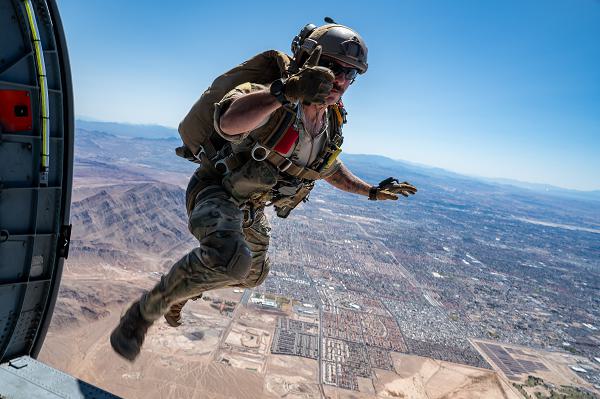
Nellis Air Force Base, Nevada. (April 15, 2025): In this photo by Staff Sergeant Jose Miguel Tamondong, Master Sergeant Trevor Clark, a pararescueman with the 88th Test and Evaluation Squadron leaps from an HH-60W Jolly Green II helicopter during a combat arms demonstration. America has a well-deserved reputation for doing whatever it takes to rescue downed pilots, anywhere at any time.
During World War II, the Japanese ridiculed the Americans for their determination to save downed airmen as another example of Yankee weakness. Philosophically, Japanese culture celebrated ritual suicide rather than surrender and they could not fathom why the U.S. would expend such a heroic effort on a handful of Airmen. Towards the end of the war, they would come to understand why.
- Details
- Hits: 1559
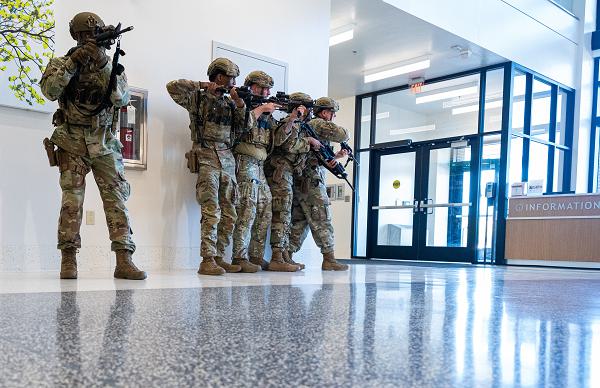
Joint Base Langley-Eustis, Virginia. (April 17, 2025): Active Shooter! In this photo by Senior Airman Mikaela Smith, Airmen from the 633rd Security Forces Squadron clear the lower level of a hospital during an active shooter training exercise. Unfortunately, active shooters have become all too common in American society. For the military, the prospect of active shooters on base is all too real.
Since 1993, US military installations have had more than twenty mass shootings. The most recent, and most deadly, was November 5, 2009, at Fort Hood, Texas. Major Nidal Malik Hasan, an Army psychiatrist, opened fire inside the base’s processing center, killing thirteen people and an unborn child, and wounding thirty-two others. Hasan was later sentenced to death and is currently on military death row at Fort Leavenworth in Kansas.
- Details
- Hits: 2082

“If a man says he isn’t afraid of dying, he is either a liar or a Gurkha.”
— Sam Manekshaw.
Visakhapatnam, India. (April 13, 2025): In this photo by 1st Sergeant James Tomlinson, a Soldier assigned to Bayonet Company, 1st Battalion, 5th Infantry Regiment, 1st Infantry Brigade Combat Team, 11th Airborne Division, provides cover for an Indian Army Gurkha rifleman. The Gurkhas are natives of Nepal with a fearsome reputation for effectiveness in combat. The Americans were in India participating in this year’s Tiger Triumph exercises.
The British Army “discovered” these fierce fighters early in the 19th century and hired them to protect its interests in neighboring India. During the Indian Rebellion of 1857, Gurkhas fought on the British side where they were officially became known as the Gurkha Rifles.
- Details
- Hits: 1320
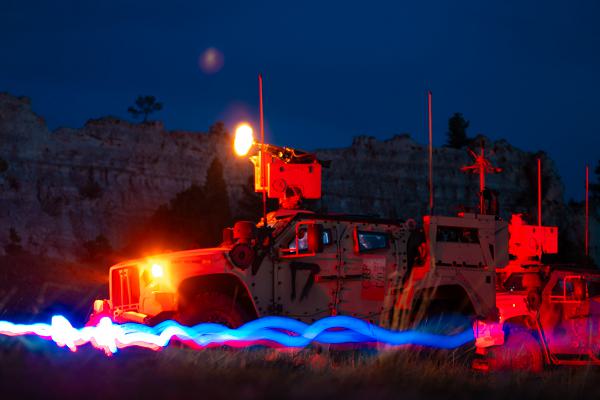
Camp Guernsey, Wyoming. (April 16, 2025): It is the ultimate nightmare scenario. An enemy force of considerable size and capability attacks a convoy of U.S. vehicles transporting a nuclear weapon. In this photo by Staff Sergeant Michael A. Richmond, Soldiers assigned to the 101st Airborne Division act as the opposing force to test the Air Force’s ability to guard these extremely sensitive convoys.
In its Nuclear Convoy Course, the Air Force uses paratroopers to simulate sophisticated attacks on base security. These series of attacks are used to evaluate how well America’s nuclear sites are protected. The goal is for students to identify gaps in their own defenses, make adjustments, and return to their home base prepared for any contingency.
Squaring off against the paratroopers was the 90th, 91st, and 341st Missile Security Operations Squadrons from F.E. Warren Air Force Base, Wyoming; Minot AFB, North Dakota; and Malmstrom AFB, Montana, respectively.
- Details
- Hits: 1502
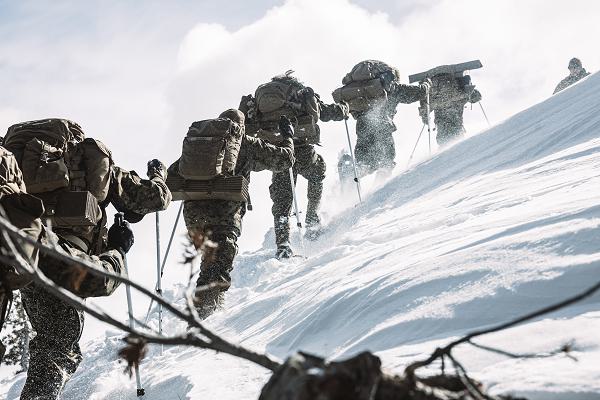
Bridgeport, California. (April 26, 2025): To most of us, scaling a mountain in a driving snowstorm would be an ordeal. To the Marines, it is the perfect place to take a hike. In this photo by Sergeant Mary Torres, Marines and Sailors with Combat Logistics Battalion 6, Combat Logistics Regiment 2, 2nd Marine Logistics Group, and 1st Battalion, 6th Marine Regiment, 2d Marine Division, take part in a tactical exercise during Mountain Training Exercise 2-25 at the Marine Corps Mountain Warfare Training Center.
The Mountain Warfare Training Center is used to prepare Marines and allied forces to operate in mountainous, high altitude, and freezing weather environments. The Center was established in the 1950s to season troops in freezing weather before they deployed to fight in the frozen mountains of Korea.


